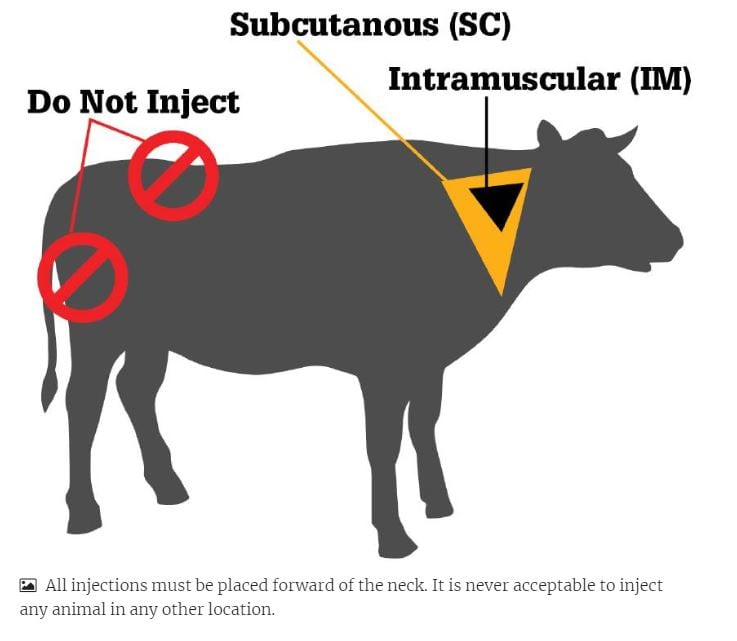Make the Vaccine Dollar Go Further
FINE TUNING vaccination procedures presents big opportunity for cattle backgrounders to make their input dollar go further and lift their averages in regards to weight gain, a leading feedlot veterinarian says.
Lachlan Strohfeldt from Bell Veterinary Services in Queensland told producers at a seminar run by Agforce and Meat and Livestock Australia at Roma recently vaccination was an area where there was room to improve.
Injection and vaccination were two separate things, he said. “How many animals do we inject to get one animal vaccinated?” Dr Strohfeldt asked. “How many times do you realise the last ten animals went through with an air shot or the last time you changed the needle was yesterday?”

Both technique and facilities needed attention, he said. The common crushes used in Australia are designed well for pregnancy testing and do not provide the best access for where injections need to be placed.
“All injections must be placed forward of the neck. It is never acceptable to inject any animal in any other location – ever,” Dr Strohfeldt said. A way forward was “to get together and think about how we can train our people and make more effective vaccination an industry-wide goal,” according to Dr Strohfeldt.
“As we continue to intensify beef production, we will have higher health expectations,” he said. “If we can improve not by giving more shots but by giving the shots we currently do better, it can be the difference between a sick one, an unwanted mortality or an animal that gets on the truck. “There is definitely room to unlock extra value by making sure the money we spend on preventable practices translates into a tangible result.”
Dr Strohfeldt said the backgrounding process in the beef industry was born out of risk mitigation in terms of supply to feedlots but had also proven a very good health management tool. “The benefits for the feedlotter are plain – improved socialisation before cattle get to the feedlot but we also get a good crack at getting the immune system primed up so cattle are at a stage when they enter the feedlot where they are ready for the challenge,” he said.
With feedlots so reliant on backgrounders, taking a look at what might make backgrounding more profitable was important, organisers of the Roma event said. Particularly in a dry season, backgrounders were working on relatively low gross margins and had to make every input dollar work as hard as it could, Dr Strohfeldt said.
Mortality may be a low risk in the backgrounding phase but it was still a risk and simple tweaks in vaccine management could make a big difference, he said. “We get paid on weight – all inputs should justify themselves on either adding it or not,” he said. “When you are calculating average daily gain across the group, nothing cuts it back like a mortality.”
Vaccine inputs vary from simple five-in-ones to the more specialised bovine respiratory disease options but either way “if you’re going to invest in doing it, do it right,” was Dr Strohfeldt’s message.
